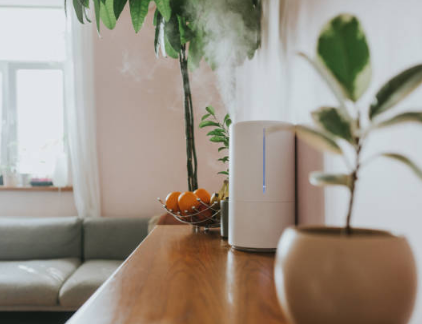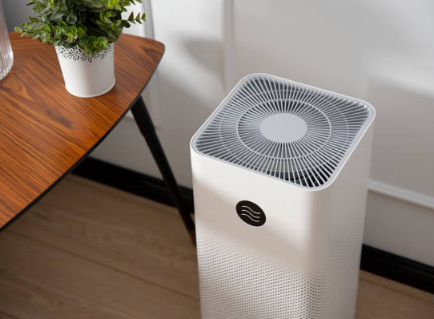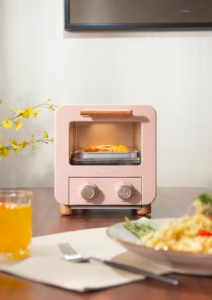The space in your home can often be thought of as a controlled environment, and you can raise or lower the temperature by adjusting the thermostat. During the colder months, the heat is sealed indoors to ensure that everything inside (including you!) is functioning properly, while in the summer, air conditioners reduce the heat in the room, keeping temperatures relatively stable throughout the year.
However, one aspect that is often overlooked in environmental or climate control is the humidity in the home. The ideal indoor relative humidity level is around 40 to 60 percent. If the relative humidity is too high, excess moisture in the air can increase the risk of wood rot and mold growth throughout the house. Indoor humidity below 40% is also an issue that can cause serious damage to the home, such as causing deformation of floors, cabinets, and other wooden furniture.

Definition:
What is low humidity? Low humidity is when there is a small amount of water vapor in the air, which makes people feel very dry. In general, low humidity refers to a relative humidity of less than 40%.
Check the relative humidity level in your home regularly, especially during the colder months of the year, so you can take action when low humidity occurs, rather than after damage to your home. Learn more about what low humidity means in your home.
Know the Humidity
In order to understand how to spot low humidity in your home and how to increase it, it is important to have an in-depth understanding of relative humidity. Relative humidity refers to the amount of water vapor in the air relative to the current temperature. Warm air contains more water vapor than cold air. This means that a cold house with a relative humidity of 50% may actually have the same amount of water vapor in the air as a warm house with a relative humidity of 40%, although there is a difference in relative humidity.
The percentage of water vapor in the air is used to represent the relative humidity in a home based on the current temperature. If the humidity exceeds 60%, the air is considered to have a high relative humidity level. If the humidity is below 40%, the relative humidity of the air is considered to be low. For example, if the relative humidity is 50%, the air currently contains only half of the water vapor it can hold, while a humidity level of 25% means that the air currently contains only a quarter of the water vapor it can hold.
How Low Humidity Affects the Home
High humidity is often associated with hazards such as wood rot and mold growth, which are often high on the list of repair and maintenance issues for DIY enthusiasts, but if nothing is done to increase the humidity level to an acceptable percentage.
If this relative humidity level persists, then the results of prolonged exposure to low humidity may begin to appear in the home. Inspect hardwood floors, wooden furniture, cabinets, drawers, counters, wallpaper, paint, windows, doors, and even houseplants for signs of shrinkage, warping, peeling, and cracking. Another sign of low humidity is that when you touch a surface, the likelihood of electrostatic shocks increases, so if the number of shocks you receive every day after walking on carpet or handling laundry starts to increase significantly, then it’s a good idea to check the humidity level in your home.

Causes of Low Humidity
There are many potential causes of low humidity, but the most prevalent cause is the outdoor temperature. During the colder months of the year, the air outside the house can’t hold as much water vapor as it does during the warmer months of the year. This means that the relative humidity of the air is usually much lower when it is cold outside. Opening a door or window allows dry, cold air from outside to enter the home, where it can heat up and expand. However, this ultimately reduces the overall relative humidity of the house.
Other causes of low humidity in homes include excessive use of air conditioners or dehumidifiers. Also keep in mind that some places don’t need to be cold to maintain low outdoor humidity, such as cities or towns located in desert areas. In these places, low humidity is an ongoing hazard that needs to be addressed with low-maintenance solutions, such as whole-house humidifiers.
Target Humidity Level
If you’re wondering what the humidity level is in your home, there are a few ways to check it. First, many thermostats, especially smart thermostats, may provide humidity readings that you can check on the thermostat screen or even through an app on your phone. If the thermostat doesn’t track or record this information, investing in a small, inexpensive device called a hygrometer is the best way to check humidity levels.
The relative humidity should be between 40% and 60% to prevent any negative effects on your home. If the relative humidity level is above 60%, then you need to lower the humidity level, but if the relative humidity level is below 40%, it is important to increase the amount of water in the air until it reaches equilibrium. Humidity level.
How to Increase Humidity
After testing the humidity in your home, you may find that the air is too dry, but this should not cause panic. There are many ways to increase the humidity in your home, which are cheap and easy to achieve. Not putting the lid on a pot of boiling water when cooking, or opening the bathroom door when showering, are all great ways to increase humidity. Another option is to leave the water in the tub after bathing until the water cools.
Adding houseplants to your home will also increase air humidity, however, if these more passive methods fail, you can also buy individual humidifiers for each room or humidifiers for the entire home. Just make sure that the humidity doesn’t increase too much, so you have to deal with high humidity.
